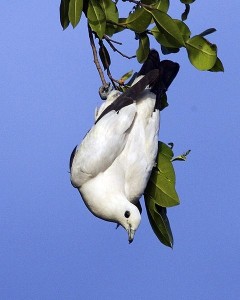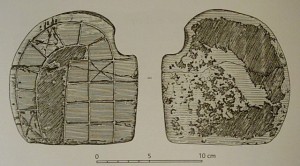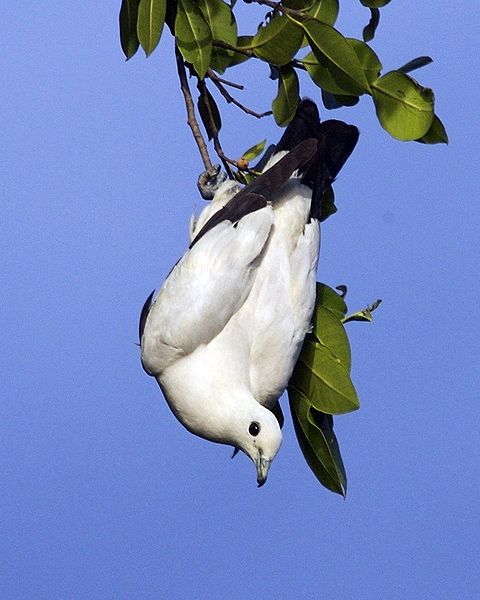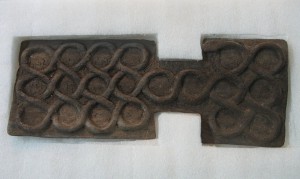
Fulcanelli in Le Mystere des Cathedrales referred to the Language of the Birds as “the language which teaches the mystery of things and unveils the most hidden truths.” Often called the Green language or language of the gods, this sacred form of communication is believed to reveal the most perfect knowledge and secret wisdom to those initiated into its wonder.
Considering the different names applied to this hidden language may provide hints on how it is learned or re-discovered. The association of the language with the color green gives the impression the language is one which comes with new life or a reconnection. As mentioned, while discussing The Green Cross, the color green has been seen for centuries to signify rebirth. A possible indication a person who understands the mysterious green language may have been spiritually awakened.
Taking into account other clues, one may ponder the attributes of birds for their relation to the mysterious wisdom. Most notably are the bird’s songs. Music is well known to hold great power. If man is quiet enough, the beautiful sounds relax and uplift. A pastor friend, who has worked with terminally ill patients, shares the following comforting effects of song; “in knowing their time has come, prepared to go, but struggling to let go, I ask if they mind if I hum a song to ease them. Humming a tune and holding their hand, the soothing sound soon connects to something deep within and they peacefully pass.”
Although this account is one of sadness, it conveys the strong touching sense of harmonious song. Perhaps the Language of the Birds is a music which speaks straight to the soul. To know a connection to the Divine, here now on Earth, could bring a welcomed peace to the common demands and bustle of this world.
Fulcanelli stated it was through Jesus sending his Spirit to his Apostles that caused the green language to be revealed to them. One may wonder if the song of the Dove, symbol of the Spirit, may be of importance to understanding the secret language; or if there is a link to Psalms 40:1, “He puts a new song in my mouth.”
However, the Language of the Birds transcends systems and has been seen in various ways for thousands of years. During the founding of the city of Rome in 753 BC, Romulus and Remus are said to have settled an argument about which hill to build the first site, by use of Augury. Augury is a form of divination by birds. The flight formation, noises, or kinds of birds (a language of birds) were believed to reveal the will of the gods. Romulus, seeing more birds than Remus, claimed victory, and went on to build around Palatine Hill. From this myth, this language of the birds is recognized to communicate the Will from above.
In Agrippa’s Three Books of Occult Philosophy, there is mention of another parallel form of divination; the divining of the liver, called haruspicy. Most commonly used was that of a sheep liver, but sometimes the liver of poultry was known to be employed. The liver, seen as a life force, was regarded like a mirror of heaven. Different marks noticed on different sections would convey the will of the Gods to the sage.
This practice is identified with an ancient board game called the Royal Game of Ur or Game of Twenty Squares. Dating back to 2600BC, the game held deep spiritual significance. Like many ancient games, they have been discovered buried inside tombs and believed to aid in the afterlife. Played during life, possibly during rituals, they offered assurance of a life after death.
 Found etched on a model of a sheep liver at excavations of Kamid el Loz was a board of Twenty Squares. This clay model is believed to have been used to teach and/or record the results of divination by the liver. The combination of game board and clay liver model, used for divination, attests the mutual importance of sacredness to both.
Found etched on a model of a sheep liver at excavations of Kamid el Loz was a board of Twenty Squares. This clay model is believed to have been used to teach and/or record the results of divination by the liver. The combination of game board and clay liver model, used for divination, attests the mutual importance of sacredness to both.
Curiously, on a cuneiform tablet written in 177 BC, rules for playing the game of Twenty Squares were inscribed and included names of five gaming pieces characterized as birds; Storm-bird, Rooster, Swallow, Raven, and Eagle. Although the tablet discloses directions for game playing (as translated by Irving Finkel), these ‘five flying game pieces’, portray birds which could signify the remnants of past divination beliefs. Here, the birds, moving across the board, recorded and revealed the will of the gods by spaces they landed on. The Language of Birds, seen again, to communicate knowledge from above with rolls of the dice.
On a brief side note, another interesting game board of Twenty Squares (of different design) was formed from the image of an entwining snake. Inside the coils were the spaces to land on. Where the head and tail of the snake met (similar to ouroborus), marked the position where the player’s piece was believed to have escaped the ‘board’.
Talking about games may seem to some as a distraction from discovering the meaning of the Language of the Birds. However, games have transcended and spread through all cultures. They are one of the first inventions of civilizations and often incorporate beliefs and visions of the time. Many symbolized and represented deeper meanings to life.
A 1283 AD manuscript, called Alfonso X’s Book of Games begins by saying games were created because “God wanted man to have every manner of happiness.” Games were said to give that delight. In the same manuscript, games are used to demonstrate crucial values of life. Playing the games gave awareness and experience to situations found outside of the game.
Presently, there is a game called Mad Gab which some people may like to see Fulcanelli and Henri Boudet play (if it were possible). Boudet was the author of The True Celtic Language and the Cromlech of Rennes-les-Bains. The game of Mad Gab shares one of the important concepts suggested by these two men; the play of words by sound. Fulcanelli connects it with the Language of the Birds.
An example of this coded language is shared within Gerard de Sede’s book, The Accursed Treasure of Rennes-le-Chateau. Sede writes, “But Boudet pretends, against all the evidence, that “Cayrolo” comes from three English words, namely “key”, “ear”, and “hole”.”
Reverse of the Mad Gab game, the sound of Cayrolo hid three words. In Mad Gab, the words are given, like “Pretty Share Weighs.” These need ‘sounded’ to provide the answer of “British Airways.” Players are encouraged to ‘listen’ in order to discover.
For many, the Maranatha puzzle or researching the mystery of Rennes le Chateau offers a playing field for which the game pieces move. Discovery of the language of the birds may be only one of the spaces or could offer the means to move onto another ‘space.’
To wonder what voice could accomplish Fulcanelli’s description of the Green Language in ability to reveal ‘the most hidden truths’, may lead some to feel it is none other than the first, green, voice; the Will of God. It’s possible that in order to hear it, one must be silent and listen.
Sources:
Fulcanelli, Le Mystere des Cathedrales, translated by Mary Sworder
Finkel, Irving, Ancient Board Games in Perspective, Britsh Museum Press, 2007
Gerard de Sede, The Accursed Treasure of Rennes-le-Chateau, translation by Bill Kersey
Board Games in pre-Islamic Persia, reviewed May 2012



I have been researching the Esoteric Science for forty years and have published a trilogy of books on the subject. At the present time I am conducting a personal threefold translational analysis of the first four chapters of Genesis: Hebrew-English-Esoteric.
My method is to analyze each word letter by letter. For each letter has a symbolic meaning and an alphanumeric designate. This makes each word an extended sentence of all its letters: for example, the first two verses of Genesis is a commentary on the first word of Genesis: BERESHITH; however, this is not the extent of my translational analysis for each word in the text though it is prefigured in previous text, including the first word: BERESHITH, melds into a unanimity of all words. To give an example-the words LIGHT, FIRMAMENT, ELOHYM, HEAVEN are esoterically interchangeable: this can be mathematical proven from the text itself. All these words are symbolic of the VESICA PISCIS or the BIRTH OF CONSCIOUSNESS; however, until these words are broken down letter by letter it does not seem possible that these words could have the same attributes.
This is similar to the concept of OM in Hindu mythology where all utterances are found in this sacred sound. It will take years to complete my project. What I have outlined here is but the preliminary work I envision for the project; however, there are other more complex issues to deal with.
I believe that what I am doing in this threefold translational analysis is bringing back the Language of the Birds. I think it is called that because it is a sacred and lofty spiritual science. Saint John was called the Eagle and I believe it is in that context that the Esoteric Science received the name: LANGUAGE OF THE BIRDS.
I would love to know when you finish your project because I would love, love, love to read your work. If you choose to publish it, I will gladly purchase a copy. Love and blessings.
Aw, this was a really nice post. In thought I want to put in writing like this moreover – taking time and actual effort to make an excellent article… however what can I say… I procrastinate alot and on no account seem to get something done.
Newyorkdress http://www.lovenewyorkdress.com